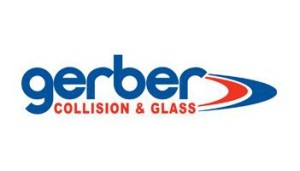
3 other MSO-related tidbits from Boyd/Gerber’s second quarter
By onBusiness Practices | Market Trends | Repair Operations
The Boyd Group’s second-quarter conference call with analysts Friday contained a few other interesting nuggets of information about the Gerber Collision parent company, as did analysts’ own insights.
Here’s three other things we learned from the call and a Raymond James report released in the second quarter. Also, don’t forget to check out our report on its “WOW Operating Way” initiative.
1. Boyd has a lot of money ready to buy your shop…
The company in late July expanded a line of credit to $150 million with an option to go to $250 million, bringing its “dry powder” for acquisitions (or any other purpose) to $375 million.
“We simply did it to increase our financial flexibility,” CEO Brock Bulbuck explained Friday, pointing out that existing credit markets made it attractive to borrow now.
Bulbuck said that the “dry powder” didn’t mean it was going to go out and buy something for $375 million, but perhaps multiple acquisition options could bring it to that level.
Bulbuck wouldn’t give any insights about where the next Boyd/Gerber auto body shops would be found, noting that such plans were “very competitive.”
The company owns more than 300 collision repair facilities in Canada and the U.S.
“We have identified some new markets where we would like to be,” he said.
He clarified for an analyst that even with the extra $250 million option, Boyd wasn’t necessarily more attractive as a buyer, and it had been buying shops just fine without it.
“Our financial health has not been an impediment,” he said of acqusitions.
2. … But at a certain point, multiples will get too high and it’ll back off
An April Raymond James analysis of Boyd by Theoni Pilarinos and Edward Gudewill also reveals some interesting insight into what Boyd and the other MSOs are paying for stores these days.
Both are bullish on Boyd, rating it an “outperform” with a target price of $60. On Monday, the target became $68, according to Octafinance.
The company had paid an average of about 4.4 time earnings before interest, taxes, depreciation and amoritization between 2010 and 2012, they wrote, but it averaged 9 times EBITDA between 2013 and now.
This likely indicates the competition between MSOs to buy shops, according to Pilarinos and Gudewill. But even with the growing multiples, they argued that Boyd “does not overpay for acquisitions and is able to efficiently integrate and increase the sales of its acquired locations.”
Because of this “disciplined approach,” they predicted that Boyd would begin to concentrate more on buying single-location shops and same-store growth.
Despite the kind of buying Boyd and private-equity competitors Caliber Collision, Service King and ABRA are doing, it’s important to note that independent stores still own the industry. According to Raymond James, single-store indies comprise 95 percent of the industry locations and 85 percent of its $30 billion in revenues — though the market is oversaturated.
3. Hints of DRP consolidation?
Bulbuck predicted insurers would attempt to consolidate their business even more narrowly, “focusing more of the repair business on fewer larger players.”
The Raymond James analysts were given the same message.
“Boyd reports that in addition to increasing DRP usage, there is a preference amongst some
insurance carriers to consolidate DRP repair volumes with a fewer number of repair shops
(favouring MSOs). In our view, this trend continues to pose an opportunity for Boyd to win share
with insurance carriers and, in turn, improve its SSS growth.”
Of course, insurers giveth and taketh away. Pilarinos and Gudewill in recounting Boyd’s history to investors observed how the company had to stop its dividend after a 2005 in which obstacles included “a key insurer changed its pay rates.”
More information:
Raymond James, April 30, 2015
